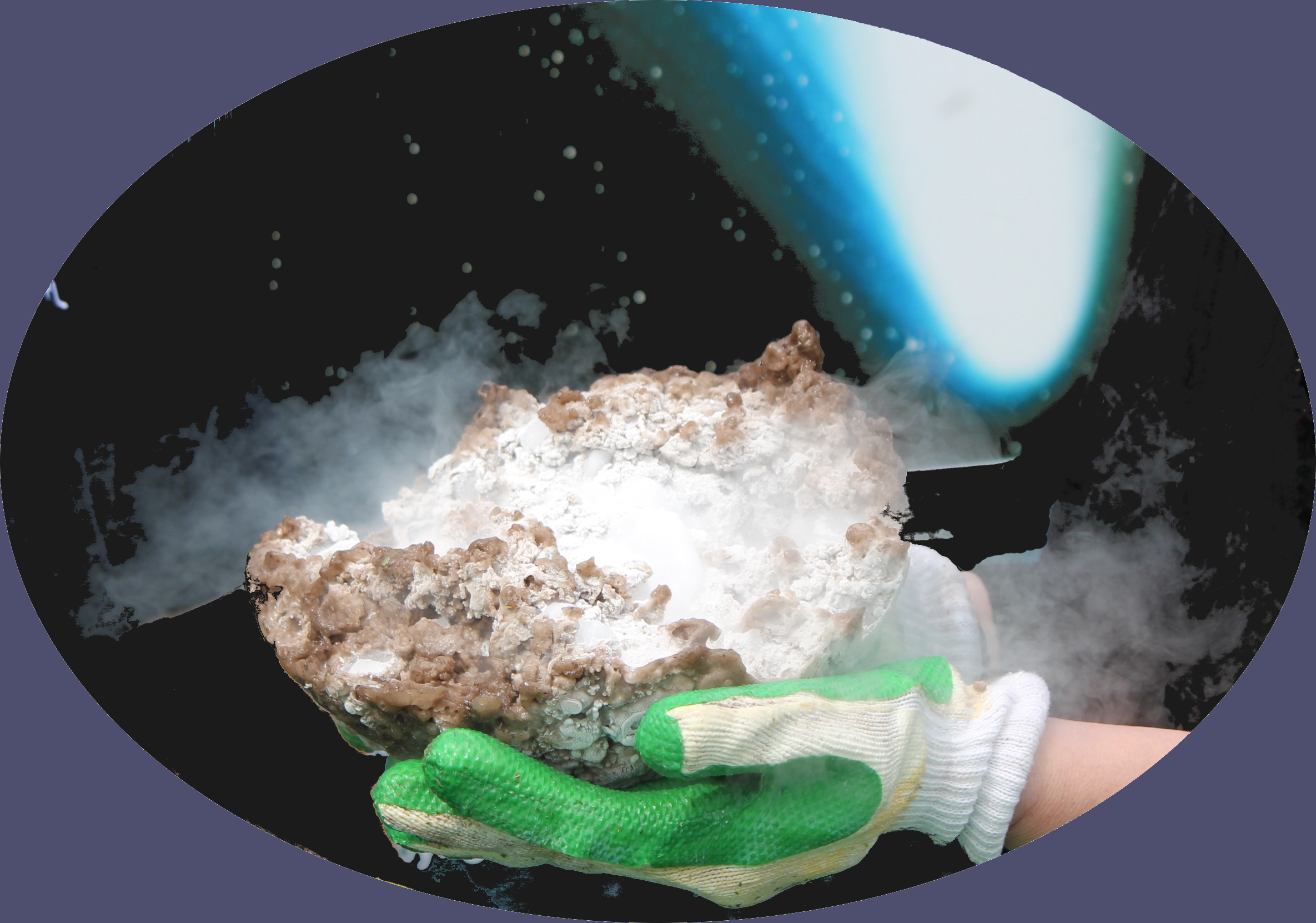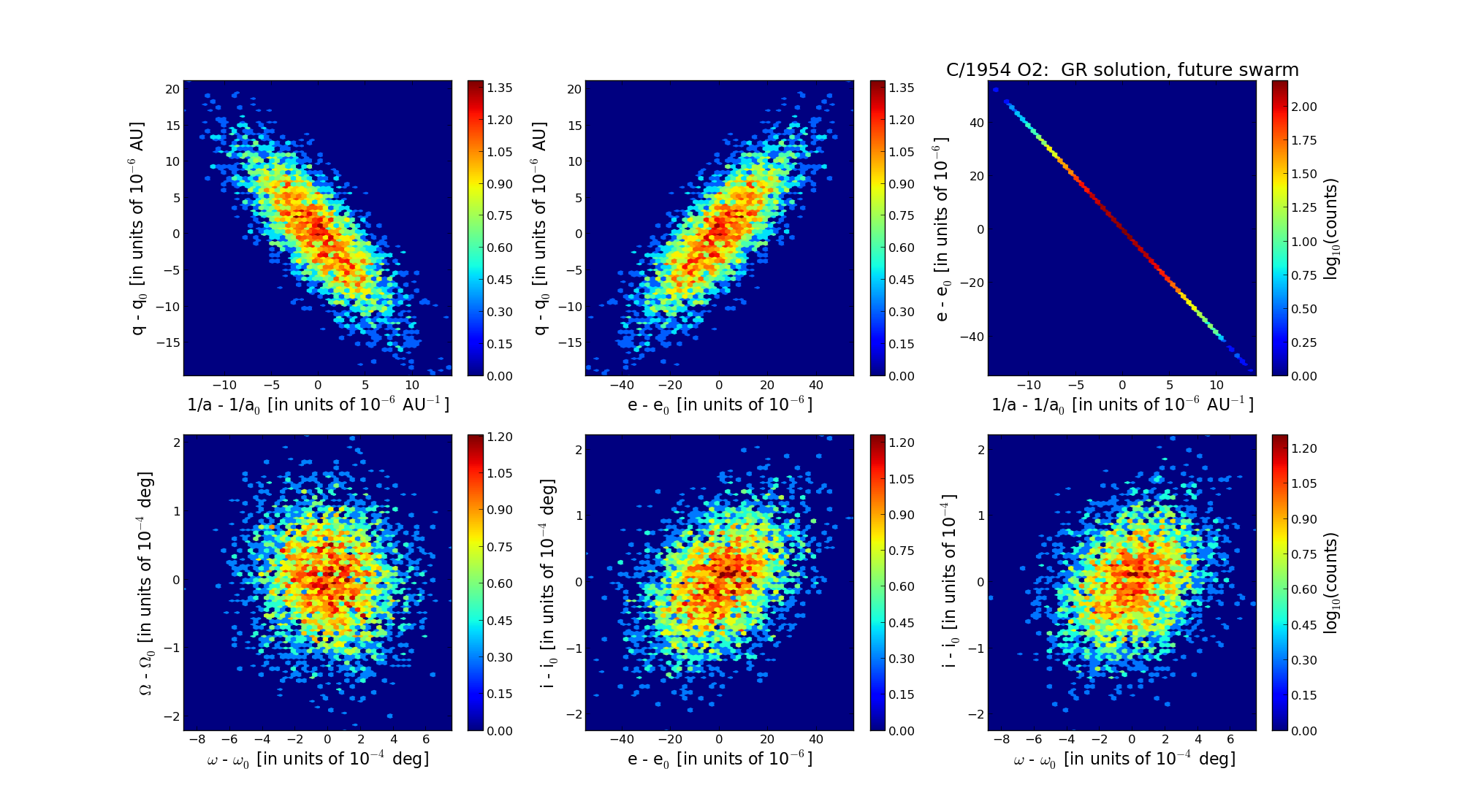| Solar System Dynamics & Planetology Group |
 |
C/1954 O2 Baade |  |
| Solar System Dynamics & Planetology Group |
 |
C/1954 O2 Baade |  |
| number of observations | 87 |
| number of residuals | 156 |
| data interval | 1954 Aug. 10 — 1957 Nov. 26 |
| rms [arcsec] | 1.19 |
| orbit quality class | 1a |
| Epoch (TT) | 19550801.0 | = JD 2435320.5 |
| time of perihelion passage (TT) | 19550813.303502 | ± 0.001365 |
| perihelion distance | 3.86992778 | ± 0.00000601 |
| eccentricity | 1.00049195 | ± 0.00001542 |
| argument of perihelion [deg] | 144.670447 | ± 0.000213 |
| longitude of the ascending node [deg] | 265.339852 | ± 0.000059 |
| inclination [deg] | 100.389026 | ± 0.000059 |
| inverse semimajor axis [10-6 au-1] | -127.12 | ± 3.98 |

| Epoch (TT) | 16511122 | |
| time of perihelion passage (TT) | 19550813.181633 | ± 0.001371 |
| perihelion distance | 3.86707539 | ± 0.00000597 |
| eccentricity | 0.99981772 | ± 0.00001524 |
| argument of perihelion [deg] | 144.684347 | ± 0.000216 |
| longitude of the ascending node [deg] | 265.289915 | ± 0.000059 |
| inclination [deg] | 100.342539 | ± 0.000059 |
| inverse semimajor axis [10-6 au-1] | 47.14 | ± 3.94 |

| Epoch (TT) | 22611015 | |
| time of perihelion passage (TT) | 19550813.099511 | ± 0.001368 |
| perihelion distance | 3.86565432 | ± 0.00000597 |
| eccentricity | 0.99901175 | ± 0.00001524 |
| argument of perihelion [deg] | 144.529391 | ± 0.000217 |
| longitude of the ascending node [deg] | 265.271988 | ± 0.000059 |
| inclination [deg] | 100.399040 | ± 0.000059 |
| inverse semimajor axis [10-6 au-1] | 255.65 | ± 3.94 |